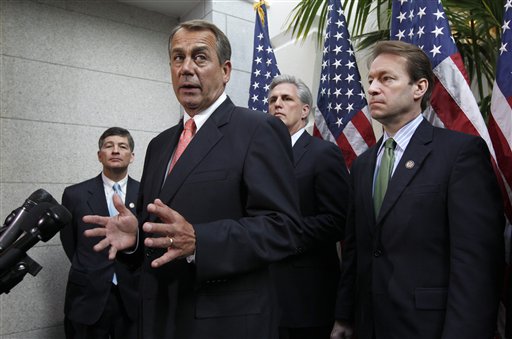Former Illinois Gov. Rod Blagojevich was sentenced this week to 14 years in prison, but the real sentence is the one taxpayers will serve many years after. He mastered the art of pairing populist rhetoric with expensive new programs directed toward his core constituencies.
To pursue his highly visible programs and agendas, Blagojevich needed money. He found it by diverting billions from the state’s pension system. By taking “holidays” from required pension system contributions and by nearly doubling Illinois’s debt, he burdened future generations to support favored groups in the present.
Perhaps worst of all, as CEO of Illinois, Blagojevich institutionalized a culture of deficit spending. He accomplished this so effectively that Blagojevich’s successor, Gov. Pat Quinn, and today’s lawmakers feel comfortable perpetuating the ruinous habits of spending and borrowing more than the state can afford. Fiscal ineptitude is the new norm.
The Illinois Policy Institute has a new report out that details Blagojevich’s lasting effect on Illinois’ fiscal condition. Read it at www.illinoispolicy.org/blago. Here’s the “top ten” list:
No. 1: Disregarded obligations to state pensioners
Policy: Blagojevich diverted billions of dollars from the pension funds of future government retirees to pay for his own spending priorities.
Problem: Blagojevich ballooned existing spending programs, ignoring his responsibility to ensure the health of the state’s pension systems. Retirees and taxpayers are on the hook for his political expediency.
Program cost: Excess of $3 billion for future taxpayers
No. 2: A culture of deficits
Policy: Grow spending to appease Blagojevich’s core constituencies.
Problem: While Blagojevich was creating and expanding unaffordable programs, the state’s financial position deteriorated year after year.
Program cost: Worst rating of net assets in the nation.
No. 3: All Kids
Policy: Expand Medicaid to all children in Illinois regardless of citizenship or family income
Problem: Blagojevich traded the future of state pensioners for middle class entitlements in the present. Even though the program significantly spent more money per child than predicted, still it was ineffective at accomplishing its goals.
Program cost: $316.5 million over five years
No. 4: Illinois Cares Rx
Policy: Expand prescription drug coverage beyond Medicare eligibility
Problem: Blagojevich spent money the state did not have to expand a program that could not be sustained, creating dependency among one of the state’s most vulnerable populations.
Program cost: $750 million since 2006
No. 5: Preschool for All
Policy: Expand government-paid preschool programs beyond those at risk for academic failure
Problem: Another example of Blagojevich unnecessarily expanding middle-class entitlements, even though state resources already were stretched too thin
Program cost: $107 million over three years
No. 6: Seniors Ride Free
Policy: Provide free rides for all seniors on the Chicago-area regional transportation system, regardless of the rider’s ability to pay
Problem: Blagojevich created another unsustainable, feel-good program for seniors that ignored the financial condition of both the Regional Transportation Authority and general government finances.
Program cost: $100 million over three years
No. 7: Flu vaccines
Policy: Bypass the FDA and federal law to acquire flu vaccines during vaccine shortage
Problem: Blagojevich ignored the federal government and spent $2.6 million on unnecessary vaccines that could not be imported to the U.S. The vaccines eventually were destroyed in Pakistan.
Program cost: $2.6 million
No. 8: I-SaveRx
Policy: In another attempt to bypass the FDA, Blagojevich set up a prescription drug importation program from Canada and other countries.
Problem: Blagojevich promoted a program that encouraged residents to flaunt federal law, resulting in more wasted taxpayer money.
Program cost:
$1 million
No. 9: Video game lawsuit
Policy: Protect children by banning the sale of certain video games to minors
Problem: Blagojevich ignored existing court decisions that established the bans violated the First Amendment. He challenged the courts at taxpayers’ expense.
Program cost: $520,000
No. 10: Tollway road signs
Policy: Putting the governor’s name on tollway signs
Problem: Taxpayers shouldn’t be on the hook for signs promoting a politician on public areas, especially if the signs egregiously are expensive.
Program cost: $480,000
And finally, let’s not forget those who help make Blago’s terms in office possible. ILReference.com has a list of donors. Some notable contributions:
-
Sep 17, 2002 Illinois Education Association $300,000 -
Feb 12, 2002 SEIU/Washington, D.C. $250,000 -
Sep 21, 2002 AFSCME Illinois Council No. 31 $250,000 -
Oct 4, 2006 Illinois Federation of Teachers-COPE $300,000
And the list goes on…

COMMENTS
Please let us know if you're having issues with commenting.